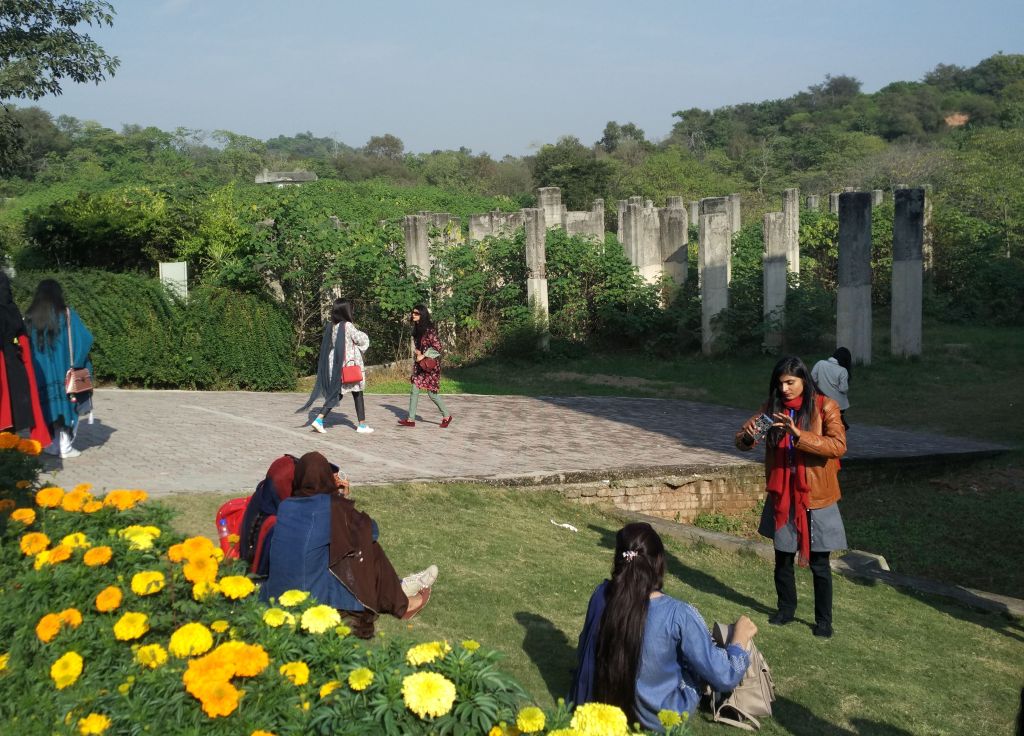 I met a friend for breakfast at a boulangerie yesterday. This actually did have very good bread and even pastries – how Pakistan has changed. Of course they were very expensive, at least by local standards, but the croissants were flaky and buttery and the scrambled eggs were proper scrambled eggs and the pomegranate juice was undiluted (to be fair, the latter is not new; the pomegranate juice here is so far beyond the syrupy preserved stuff you get in the UK its a different drink altogether. And let’s not even speak of the pomegranates themselves).
I met a friend for breakfast at a boulangerie yesterday. This actually did have very good bread and even pastries – how Pakistan has changed. Of course they were very expensive, at least by local standards, but the croissants were flaky and buttery and the scrambled eggs were proper scrambled eggs and the pomegranate juice was undiluted (to be fair, the latter is not new; the pomegranate juice here is so far beyond the syrupy preserved stuff you get in the UK its a different drink altogether. And let’s not even speak of the pomegranates themselves).
Then, we decided to pop into the Natural History Museum, which is in Shakarparian, a little hill park just on the edge of Islamabad. It was quite something, and I say this as a connoisseur of slightly shitty museums. It’s shaped like a bit arch and a model just inside showed that there were supposed to be several more arches extending down the hillside, but which have not been built – there are concrete pillars in the garden to one side, where they are intended to be built. Inside there were a few terminals of the sort used for interactive, but they were basically a sort of box checking exercise, positioned far too high for any child to reach and with rather generic materials clearly commissioned by a bureaucrat from someone who did the bare minimum (eg a photo of an animal’s eyes, asking children to match them to one of several generic creatures depicted beside them. Their primary use appeared to be selfie taking. This continued inside – the museum was absolutely rammed with school children and college students from nearby small towns and the primary activity appeared to taking selfies against, for example, a display case with a few hundred identifical green beetles and no explanation whatsoever, or inside a fibreclass cave with models of cavemen inside. There were also a few fairly random animals in glass cases which I assumed were models until I looked closely and realised they were preserved. But, again, little context or explanation.
It got very crowded and one of the museum guards suggested we go through the exit instead, which was a very good suggestion indeed. This was probably the best bit of the museum: a large hall with, on the left, scenes from various Pakistani ecosystems with taxidermied creatures and reasonable descriptions. On the other side were similar displays with environental disasters. Unfortunately the deforestation scene had one rather attractive tree still standing, and it was a favourite selfie spot, presumably with the logging etc cropped out. Generally, and unsurprisingly, any display with paradisical greenery was very popular, and the museum staff had clearly accepted this as there were several popular display cases with nothing other than bunches of articificial flowers.
Upstairs were a couple of animatronic dinosaurs, and further still was an immense badly preserved whale shark and a small tank with some too-large terrified looking fish. And, for some reason, a tomato display consisting of tomato products such as ketchup bottles.
There were clearly some very good objects, things excavated from all around the country, but with no attempt at displaying or interpreting them, and certainly most of the visitors didn’t seem intrested either. Later we had a brief chat with the museum staff and I felt rather ashamed of being so critical (in my head, of course) as they were clearly very enthusiastic about the collection and the museum generally. It’s really a national malaise around science and knowledge, and a structure in which bureaucrats with no expertise or interest in museum science make decisions, decisions are subject to ideology, and in any case it’s very low indeed on the ladder of political priorities.
I felt rather bad also about photographing what I was critical of, so the image is of the rather lovely garden where the museum’s other galleries will be built. Apparently their best collections are all in storage.